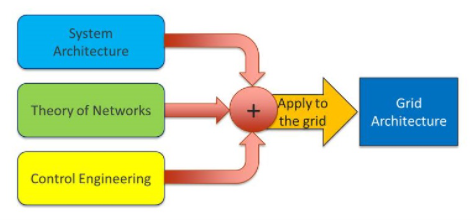Avoiding the house that Jack built
Derived from the children’s nursery rhyme; ‘The house that Jack built’ usually describes something that is badly designed or patchworked together without an overall result being considered. As we adapt our energy grid to prepare for a net zero future, it is imperative that networks, system architects and everyone in between ensure our planning is well considered rather than patchworked together. We take a look at the work AEMO and CSIRO are doing to plan for the system transition.
We all recognise the electricity system is a deeply complicated machine, but even for most of us in industry, we think of it in easily digestible terms like “it’s generated, it’s transported and it’s used”. Few realise exactly how amazing this machine is because we take for granted that it will always be there. Even fewer appreciate all the millions of details that must work consistently every second of every day for it to continue functioning. It’s because of this superficial understanding that we risk oversimplifying a deeply complex problem and solving it in a patchwork manner only to end up with a house that Jack built.
What is a system?
Before we dive into the topic that regularly makes my brain explode, we need to begin with the fundamental building blocks. Firstly, “what is a system?” A quick google will tell you that a system is “a set of things working together as parts of a mechanism or an interconnecting network: a complex whole”. Great, but what does that mean for electricity?
A good analogy is one of a house. In a house there are different systems like plumbing (water and sewage), wiring (electrical) and heating (gas). All these systems don’t directly interact with one another, but they do work together to provide a service. For example, all three systems are probably needed at various points to cook dinner.
What most people don’t think about is how these systems work and interact, because they already exist and they work – why change or think about them? But what if the systems in your house were rapidly changing and no one really knew what they would look like in the future? I bet you would start to pay a bit more attention if you needed to buy a new heater that runs on hydrogen or if you couldn’t flush your toilets after 5pm because the sewage system, was congested.
This also highlights something that’s very human. We naturally focus on fixing symptoms and not causes. For example, if we see a leaky tap we replace a washer, but what if the actual cause was very high-water pressure from the mains? By replacing the washer we’ve bought ourselves a few more months, but soon it will break down and start leaking again. Addressing recurring symptoms wastes time, costs more and generally accumulates unhappiness.
Now apply this concept to something like the electricity system during a once-in-a-century transition. Mind blown.
What is systems architecture and why is it important?
According to the Pacific Northwest National Laboratory (PNNL), systems architecture[1] is a way of thinking about how a group of systems or a “system of systems” behaves, what it can and can’t do, and how these different things work together as a whole. This framework is particularly useful to complex machines like the electricity grid.
Figure 1: PNNL Grid Architecture Disciplines
Without getting too technical, it breaks up a very complex problem like the electricity grid in transformation by viewing it through different lenses in a managed and holistic way. What it doesn’t do is provide quick and easy answers that turn out to be costly mistakes in the long term. It also doesn’t provide individual solutions to specific problems. That’s the role of the design engineers who work in organisations tasked with specific roles and responsibilities.
Like the architects that design buildings, they use their understanding of human requirements, ambitions and ideals to provide broad strokes of how the building looks and feels to deliver on its purpose. Civil engineers are the ones who figure out which pipes and wires go where within the broad outline of the system.
Even with these mental tools and frameworks this is hard, hard work. But if something is hard, it’s probably a good indication that it’s worth doing. I can think of nothing more important for the prosperity of Australia (and the world) than adapting our energy system for the future – so much depends on it economically, socially and environmentally.
CSIRO/AEMO Global Power System Transformation (G-PST)
CSIRO (Commonwealth Scientific and Industrial Research Organisation) and the Australian Energy Market Operator (AEMO) are doing their bit to move the industry’s thinking forward to meet the many pragmatic and technical problems appearing now. Networks, as well as AEMO, are feeling the bow wave of challenges that the energy transition is presenting through things like minimum demand, lack of transmission infrastructure to connect variable renewable energy (VRE), lack of distributed energy resources (DER) visibility and the added disruption of climate change, to name a few.
This broad program of research questions[2] cover many valuable topics such as how we operate a system with few to no synchronous machines, how to restore the system after blackouts, ensure system stability with DER and of course power system architecture.
CSIRO and AEMO are to be commended for this work and networks are eager to help to ensure this transition delivers safe, secure, and reliable clean energy at the lowest possible cost to customers.
I leave you with a simple question.
If you want to build a house, would you start with a pencil or a shovel?
[1] https://gridarchitecture.pnnl.gov/
[2] https://www.csiro.au/en/research/technology-space/energy/g-pst-research-roadmap




